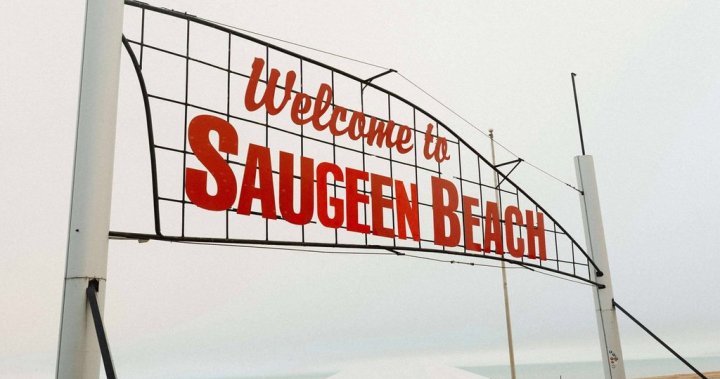A significant shift in recognition of Indigenous land rights has emerged along Ontario’s popular Lake Huron shoreline, as new signage at Sauble Beach now acknowledges the Saugeen First Nation’s historical ownership claims. This subtle but meaningful change marks an important step in addressing long-standing territorial disputes in one of the province’s most visited summer destinations.
After decades of contention over the rightful ownership of the picturesque 11-kilometer stretch of sandy shoreline, visitors to the beach will now notice updated signs indicating they are entering “Saugeen First Nation Territory.” This represents a notable departure from previous signage that simply welcomed beachgoers without reference to Indigenous territorial claims.
“This acknowledgment may seem small to some, but it represents years of advocacy and a growing recognition of our inherent rights to these ancestral lands,” said Chief Conrad Ritchie of the Saugeen First Nation in a statement provided to CO24. “The beach has always been part of our territory, and proper recognition is a step toward reconciliation.”
The territorial dispute has complex historical roots dating back to Treaty 72 of 1854, which the Saugeen First Nation maintains did not include the surrender of the beach lands. Legal proceedings regarding ownership have continued for generations, with a landmark case currently before Ontario courts that could potentially resolve the matter.
The Town of South Bruce Peninsula, which has jointly managed portions of the beach, has approached the signage change with measured acceptance. Mayor Garry Michi noted, “While legal questions remain unresolved, we respect the importance of acknowledging Indigenous connections to the land. We continue to work toward solutions that honor all stakeholders while ensuring public access to this natural treasure.”
Tourism experts suggest the acknowledgment is unlikely to impact visitor numbers to Sauble Beach, which draws approximately 150,000 visitors during peak summer months. The beach remains publicly accessible, though conservation measures have increased in recent years to protect its fragile dune ecosystems.
Indigenous rights advocates see the signage as part of a broader trend of recognition occurring across Canada. According to data from Indigenous Services Canada, formal acknowledgments of traditional territories have increased by 37% nationwide since 2015, reflecting growing awareness following the Truth and Reconciliation Commission’s final report.
“Land acknowledgments are meaningful only when they lead to substantive action,” explains Dr. Melissa Thornton, Indigenous studies professor at the University of Toronto. “In this case, the signage represents a tangible step in recognizing legitimate claims, but true reconciliation will require resolution of the underlying ownership question.”
The situation at Sauble Beach illustrates the complex intersection of tourism, municipal governance, and Indigenous rights playing out across Canadian communities. As world attention increasingly focuses on reconciliation efforts, such symbolic changes may foreshadow more substantial shifts in how public lands are recognized and managed.
As summer approaches and beachgoers prepare to return to Sauble’s shores, they’ll encounter not just a recreational destination but a place of significant cultural and historical importance. The question now facing visitors and residents alike: How might this growing recognition of Indigenous territorial claims reshape our relationship with Canada’s most treasured natural spaces?










